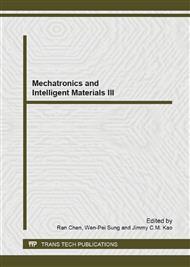p.180
p.184
p.189
p.193
p.197
p.201
p.205
p.211
p.215
Physical Properties and Antibacterial Activity of a Chitosan Film Incorporated with Lavender Essential Oil
Abstract:
Chitosan-based films containing lavender essential oil (LEO) (0, 0.5%, 1.0%, 1.5% (v/v)) were prepared to evaluate their physical and antibacterial activities. In order to study the impact of the incorporation of LEO into chitosan matrix, the solubility, mechanical property, water vapor permeability, and antibacterial activity of the films were investigated. Fourier transform infrared chromatography (FTIR) was carried out to explain structure–property relationships. Results showed that the solubility and water vapor permeability of the chitosan-based film decreased by LEO incorporation. Films containing LEO showed better mechanical property. FTIR spectra demonstrated good interaction between functional groups of chitosan with LEO. With the concentration of LEO increased from 0 to 1.5 %, the inhibitory zone of four bacterial strains (Escherichia coli, Staphylococcus aurous, Bacillus magaterium, Bacillus subtilis) increased. It can be concluded that chitosan films containing LEO can be used for development of active food packaging materials.
Info:
Periodical:
Pages:
197-200
Citation:
Online since:
June 2013
Authors:
Price:
Сopyright:
© 2013 Trans Tech Publications Ltd. All Rights Reserved
Share:
Citation:


